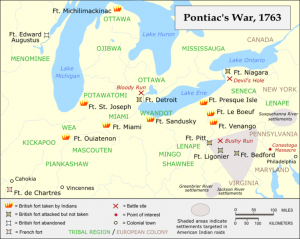Treaty of July 29, 1829
Articles of a treaty made and concluded at Prairie du Chien, in the Territory of Michigan, between the United States of America, by their Commissioners, General John McNeil, Colonel Pierre Menard, and Caleb Atwater, Esq. and the United Nations of Chippewa, Ottawa, and Potawatamie Indians, of the waters of the Illinois, Milwaukee, and Manitoouck Rivers. Article 1. The aforesaid nations of Chippewa, Ottawa, and Potawatamie Indians, do hereby cede to the United States aforesaid, all the lands comprehended within the following limits, to wit: Beginning at the Winnebago Village, on Rock river, forty miles from its mouth, and running thence … Read more

